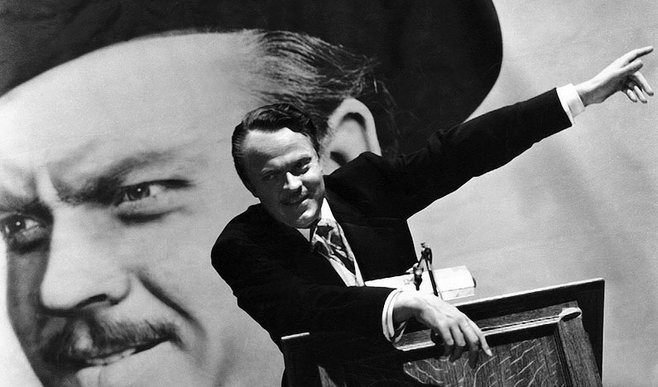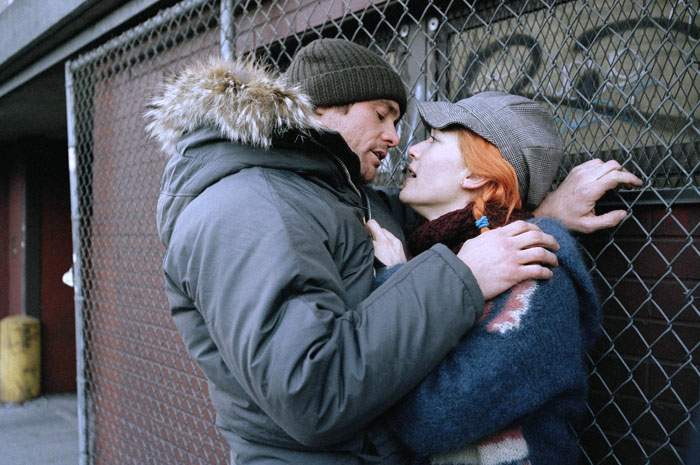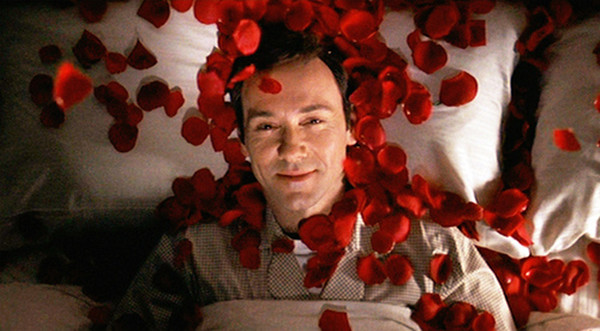5. Citizen Kane (1941) – d. Orson Welles, w. Herman J. Mankiewicz and Orson Welles

A writer can’t underestimate the importance of a character’s backstory. A multidimensional character’s story begins long before the film’s opening shot. Orson Welle’s classic, Citizen Kane, only deals with its titular character’s backstory, being that Charles Foster Kane dies in the opening scene. The majority of the film is told through flashbacks of Kane’s life. The central conflict of the story revolves around a journalist, Jerry Thompson, investigating the meaning behind Kane’s last word, “Rosebud.”
Following Kane’s death, we see a newsreel of his accomplishments. It gives us an image of how this powerful man was perceived in the public eye. He ran newspapers, ran for political office, and built himself the largest private estate in the Western Hemisphere. The journalistic investigation done by Jerry Thompson reveals how those close to Kane perceived him.
The first bit of journalistic investigation involves reading a manuscript written by Mr. Thatcher, the man who adopted Kane as a child. In this manuscript we learn that Kane was born into a large fortune, and his mother puts him up for adoption so his greedy father won’t have access to that fortune. While the adoption papers are being signed, a young Kane plays with his sled outside in the snow.
The next person Thompson meets with is Mr. Bernstein, an executive at The New York Inquirer, the newspaper Kane owns. In this perspective we see Kane as a charismatic man of power. He is a news mogul at the height of his power. This flashback introduces us to Kane’s best friend, Jedediah Leland.
The flashback told by Leland gives us the most vital information on Kane’s character. In this flashback, we see Kane’s faults. We see his affair with opera singer, Susan Alexander. We see his failed attempt to run for governor. And we see his failed attempt to make the talentless Susan Alexander a star. Leland also gives us the most concise and comprehensive quote regarding Kane’s character: “That’s all he ever really wanted out of life… was love.”
That line is the central aspect of Kane’s character. Everything Kane ever did was an attempt to recover the love he lost when his parents gave him away. Kane’s last word is “Rosebud” because that was the sled he was playing with the moment he was adopted. Rosebud was symbolic of the love that was absent from his life.
6. One Flew Over the Cuckoo’s Nest (1975) – d. Milos Forman, w. Saul Zaentz and Bo Goldman

The protagonist versus the antagonist results from two opposite forces colliding. There are few protagonists that oppose each other more than Randal P. McMurphy and Nurse Racthed in One Flew Over the Cuckoo’s Nest. Nurse Ratched is the head Nurse of a psyche ward, who controls her patients with a strict routine and unfailing order.
McMurphy is a new patient hell-bent on bringing some anarchy into Nurse Ratched’s ward. Mcmurphy is the protagonist and Nurse Ratched antagonist. Mcmurphy, a force of chaos, collides with Nurse Ratched, a force of order.
Their first clash comes during a group therapy session when Mcmurphy requests that the ward breaks its normal routine and watches the World Series later that night. Nurse Ratched is opposed to the idea but allows a vote where the majority decides if the ward will break its routine that evening.
Exactly half of the ward votes to watch the World Series and Nurse Ratched ends the group therapy session immediately after. Moments later, McMurphy convinces one of the other ward members to vote to watch The World Series. When he brings this to Nurse Ratched’s attention, she coldly replies with, “the meeting was adjourned, and the vote was closed.”
These clashes continue throughout the movie. The final one occurs after McMurphy throws a party in the ward. The next morning, Nurse Ratched threatens to tell a patient’s mother about the sexual relations he had at the party. As a result the patient commits suicide. McMurphy strangles Nurse Ratched, nearly to death, because of it. That leads to his demise as nurse Ratched orders him to have a lobotomy to subdue his rebellious nature.
Conflict is the essence of all narrative, and a conflict between a protagonist and an antagonist is vital to a script. Protagonists and antagonists are opposing forces, and assigning clear forces, such as chaos and order, is an effective way to create conflict between the two.
7. Eternal Sunshine of the Spotless Mind (2004) – d. Michael Gondry, w. Charlie Kaufman

Great characters have intricate psyches. The majority of Eternal Sunshine takes place in its protagonist’s mind. The script creates a visual representation of Joel’s psyche. He is having his ex-girlfriend, Clementine erased from his memories.
The first words we hear are Joel’s thoughts in a voice over narration of his journal entry. The audience is immediately oriented in this narrative by Joel’s most intimate thoughts. The film dives further into Joel’s mind while his memories of his ex girlfriend, Clementine, are being erased. The erasing starts with Joel’s last memory of her.
The two fight over Clementine’s drinking problem and Joel’s distrust of her. This horrific memory validates Joel’s motive to erase her. But as we travel back in time we see Joel beg to keep the happier memories. Joel remembers his old perception of Clementine and his motive shifts toward hiding Clementine in his subconscious to preserve his memories.
While he’s hiding her, we travels back to his early childhood memories and we gain more insight on his character. There, we see a traumatic memory where Joel is bullied into hitting a dead bird with a hammer. His reclusive nature as an adult derives from being bullied as a child. These memories are essential in understanding Joel’s character.
Eternal Sunshine offers a unique look at a character’s psyche by giving a literal visual representation of Joel’s mind. Well-developed characters should have a psyche as complex as Joel’s even if the movie doesn’t take place inside their mind. They should have perceptions that drive their actions and memories that mold their character.
8. American Beauty (1999) – d. Sam Mendes, w. Alan Ball

Characters are servants of a film’s theme. Each character should have a distinct relationship with the film’s core ideology, which is revealed with its themes. American Beauty deals with themes regarding appearance, and in particular, looking closer at appearances to see the characters’ true nature.
Lester Burnham, the protagonist, is tired of his appearance. He’s sick of his mundane life of working in a cubicle and coming home to his dysfunctional family. It takes an erotic glimpse at his teenage daughter’s friend to realize that he still has the capacity to experience joy and passion. This sets him on a path of pot smoking and weightlifting that causes him to change his appearance and reinvent nature of his character.
His wife, Carolyn, is obsessed with appearance. She claims “in order to be successful, one must project an image of success at all times.” She needs to project an image of being a successful realtor to replace her appearance of a dull housewife.
Lester’s daughter, Jane, hates her appearance as well, and the notion of appearance in general. Her mother constantly reminds her of her lack of effort in creating an appearance. She has no refuge from that at school either. Her attractive best friend, Angela, is obsessed with appearance as well. Jane doesn’t make peace with her appearance until she starts a relationship with her new neighbor, Ricky Fitz.
Ricky is unique in that he sees the true nature of characters as opposed to their outward appearance. Ricky sees the complex and wonderful nature of her character. Inversely, he sees passed Angela’s beautiful appearance and sees the boring, insecure nature of her character.
Theme is among the most important aspects of a screenplay. It is the articulation of the ideology on which a film comments. Characters should not be selected and designed at random. They should be designed to illuminate distinct elements of a film’s theme.
Author Bio: Logan is a writer from western Connecticut. He’s on a quest to use movies to unveil truths about the human condition. When his quest is on hold he can be found writing his novel or dancing at a Phish concert.